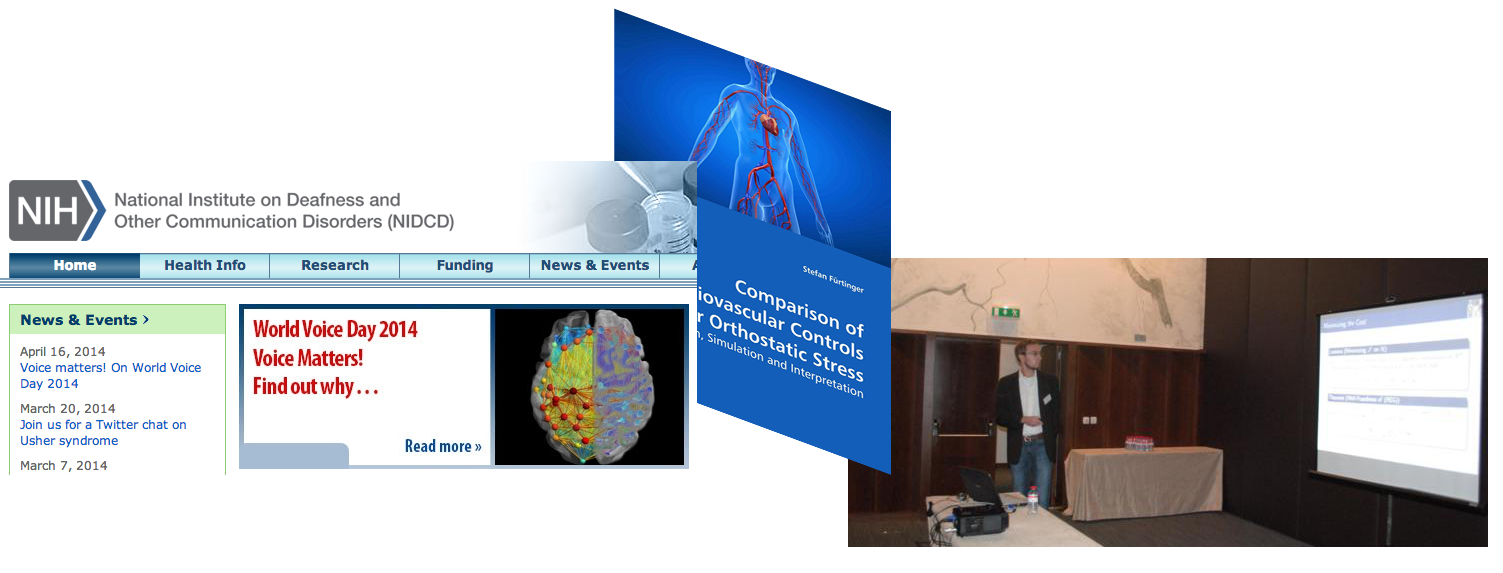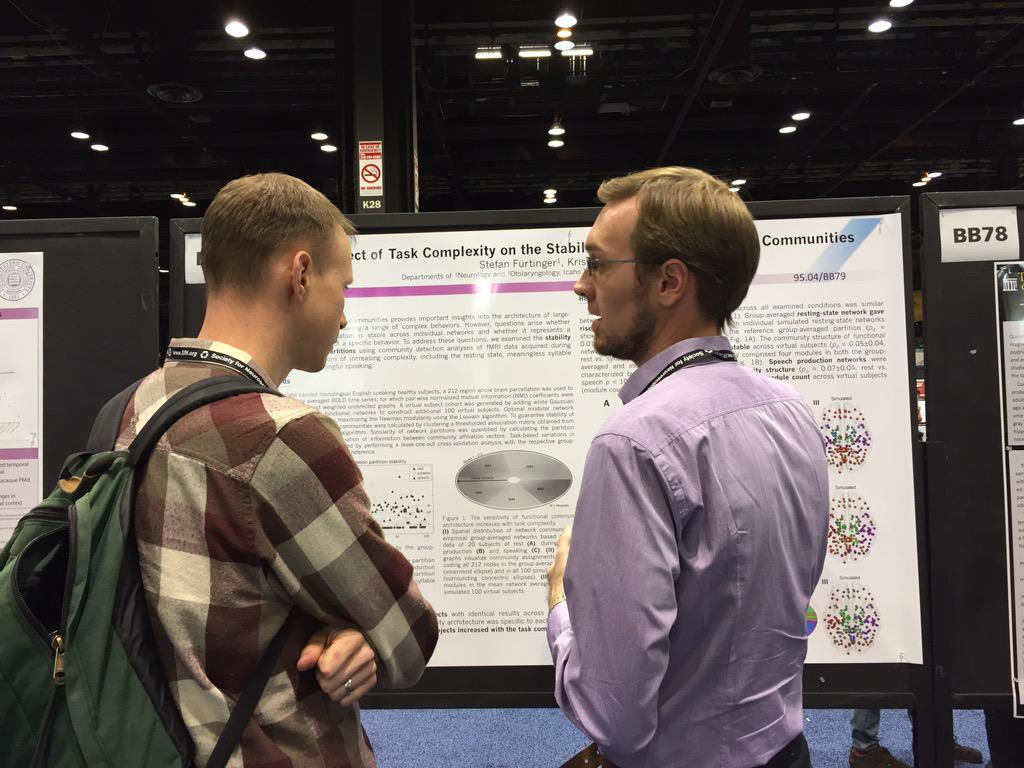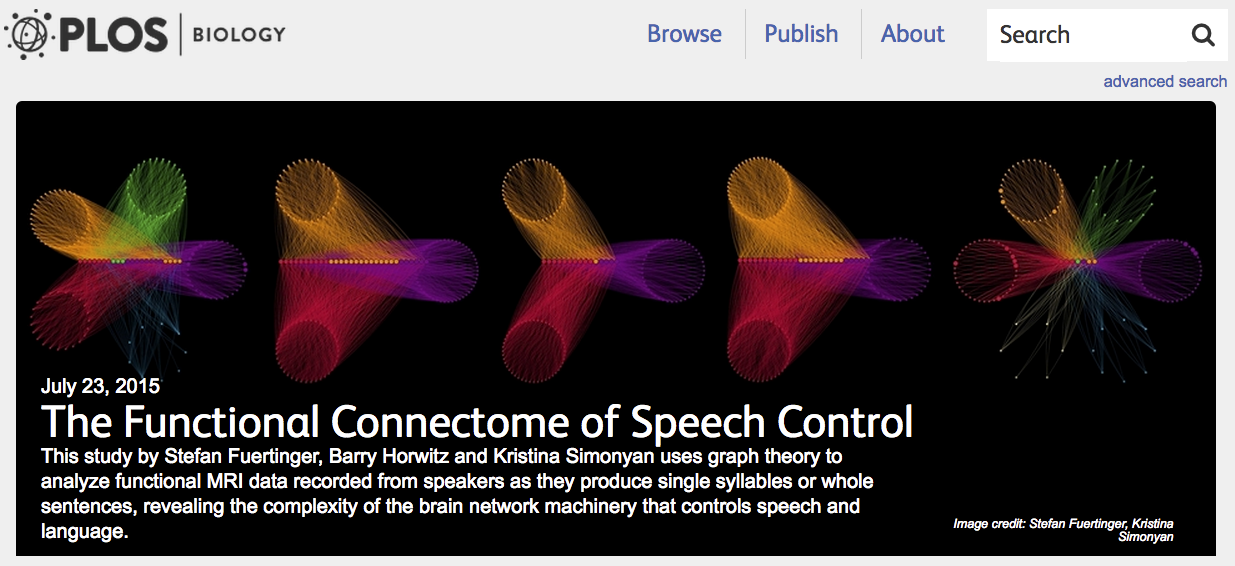Publications and Teaching
This page provides a summary of my contributions to scientific literature and presents a selection of lectures, courses and workshops I have given.

Courses
Below is a short summary of my ongoing teaching and mentoring endeavors.

Cluster Introduction Workshops
I am holding an ongoing workshop series for onboarding new users of the ESI HPC cluster that provides an introduction to bash, SLURM, VNC and cluster file-system use.
Software Carpentry Workshops
I give workhops that cover the basics of research data management, version control with git, modern IDEs for programming (speifically VS Code) and best practices for writing research codes.
Advanced SLURM Workshops
I am co-leading a workshop that discusses specifics of writing sbatch files, attaching to running jobs, requesting specific hardware resources and integrating SLURM in Matlab and Python via slurmfun and acme, respectively.
Modeling Week With Mathematics
I was project leader at the 2012
Modeling Week With Mathematics.
My group developed artificial neural networks to perform optical character recognition
and face detection tasks. Details can be found in their
final report (in German). I used
this presentation to introduce the problem
statement and these slides (both in German) as neural network primer.
The implementation was done solely by the students in Python using PyBrain.
Mentorships
My mentee, Jacob Yatvitskiy, was announced as semi-finalist for his computational modeling project in the nation-wide Regeneron Science Talent Search, the most prestigious pre-college science competition in the US. He was named one of only 300 Regeneron STS 2017 Scholars.
I continued supervising Jacob Yatvitskiy for his computational modeling work which was awarded 1st place at the Junior Monmouth Science Symposium 2016. I continued mentoring Jacob in his senior year as part of the mentorship program of the High Technology High School.
I supervised High Technology High School Student Jacob Yatvitskiy during his summer internship within a computational modeling project.
I supervised Joel C. Zinn during his time as research associate in the Dystonia and Motor Control Laboratory at the Icahn School of Medicine at Mount Sinai which culminated in our joint paper A Neural Population Model Incorporating Dopaminergic Neurotransmission During Domplex Voluntary Behaviors published in PLoS Computational Biology.
I supervised Hunter College High School senior student Stephen Leong for his project Correlation Networking of Speech Production: Examining the Brain with Comparative Graph Analysis, with which he entered the semi-finals of the nation-wide Siemens competition Math:Science:Technology.
Lectures
Qualification course for university entrance
Presentations

Below you find a selection of public speaking engagements at professional scientific meetings and research institutions as well as workshops, courses and lectures I gave.
Invited Talks
University Bremen, Brain Research Institute, Germany, November 9 2023: neuro-conda: A Python Distribution for Neuroscience
1st Castellum Community Meeting, Max Planck Institute for Human Development, Berlin, Germany, September 25 2023: Castellum, Cortex and Chronology - First Impressions of Using Castellum in Neuroscience
4th FME Data Scientist Community Meeting 2023, Online, August 7 2023: ACME: Parallelize Code Easily
Goethe University Frankfurt, Institute of Psychology, Germany, November 12 2018: Analysis and Modeling of Speech Motor Control
MONDO Initiative, Copenhagen, Denmark, May 23 2018: Network Analysis for Medical Applications
Goethe University Frankfurt, Department of Neurology, Germany, September 21 2017: Mapping the Functional Atlas of Human Speech Production
Goethe University Frankfurt, Institute of Mathematics, Germany, June 21 2017: Probing the Complexity of Brain Networks Controlling Human Speech using Computational Mathematics
National Institutes of Health, Bethesda, USA, November 20 2014: Modeling Dopaminergic Neurotransmission during Complex Voluntary Behavior
Columbia University, Columbia Neuroscience, New York, USA, April 16 2014: Dopaminergic Neurotransmission in Speech: from Neuroimaging to Neural Modeling
Mount Sinai School of Medicine, Department of Neurology, New York, USA, March 13 2013: A Novel Approach to Register Intensity Modulated Images
Universität zu Lübeck, Institute of Mathematics and Image Computing, Germany, May 30 2012: An Approach for Computing Binary Edge Maps
Conference Presentations
deRSE23 - Conference for Research Software Engineering in Germany, Paderborn, Germany: ACME: Flexible Scalability for Research Software
Friedman Brain Institute Neuroscience Retreat, New York Academy of Medicine, USA: Dopaminergic Neuromodulation During Speech: A Combined iEEG and Neural Modeling Study
Neurology WIP Seminar, November 1 2014, Mount Sinai School of Medicine New York, USA: The Functional Connectome of Speech Control
5th SFB Status Seminar, November 14–16 2012, Castle Röthelstein, Austria: An Approach to Computing Binary Edge Maps for the Purpose of Registering Intensity Modulated Images
4th SFB Status Seminar, November 2–4 2011, Castle Röthelstein, Austria: A Higher Order Regularization Approach for Computing Binary Edge Maps
VISAPP 2011, International Conference on Computer Vision Theory and Applications, March 5–7 2011, Villamoura, Portugal: Elastic Registration of Edge Sets by Means of Diffuse Surfaces
GAMM 2011, 82nd Annual Meeting of the International Association of Applied Mathematics and Mechanics, April 18–21 2011, Graz, Austria: Registration of Edge Sets for Mapping a Purkinje Fiber Network onto an Endocardium
Poster Presentations
On The Feasibility of Epileptic Seizure Forecasting Using Intracranial High Frequency Connectomics at BrainModes 2016, Coordinated Brain Activity: Foundations and Applications, December 1–2 2016, Brussels, Belgium.
Connectome-Wide Phenotypical and Genotypical Associations in Laryngeal Dystonia at 46th Annual Meeting of the Society for Neuroscience, November 12–16 2016, San Diego, USA.
The Effect of Task Complexity on the Stability of Functional Network Communities at 45th Annual Meeting of the Society for Neuroscience, October 17–21 2015, Chicago, USA.
Dopamine Influences Activity in the Laryngeal Motor Cortex during Speech: an iEEG and Modeling Study at 21st Annual Meeting of the Organization for Human Brain Mapping, June 14–18 2015, Honolulu, USA.
Dopamine Modulates Lateralization of Motocortical Activity During Speech: a fMRI and Modeling Study at 21st Annual Meeting of the Organization for Human Brain Mapping, June 14–18 2015, Honolulu, USA.
The Functional Connectome of High Frequency Networks during Epileptic Seizures at 44th Annual Meeting of the Society for Neuroscience, November 15–19 2014, Washington D.C., USA.
Dopamine drives left-hemispheric lateralization of brain activity and functional connectivity during speech production: An fMRI and neural modeling study at 44th Annual Meeting of the Society for Neuroscience, November 15–19 2014, Washington D.C., USA.
The Functional Connectome of Speech Production at 20th Annual Meeting of the Organization for Human Brain Mapping, June 8–12 2014, Hamburg, Germany
Scientific Publications

Below you find a list of scientific journal articles, technical reports, book chapters and monographs I have (co)-authored as well as my dissertation and diploma thesis.
Monographs
Stefan Fürtinger:
Comparison of Cardiovascular Controls under Orthostatic Stress: Derivation, Simulation and Interpretation,
VDM Verlag Dr. Müller, 2010.
Buy on Amazon
Book Chapters
Stefan Fuertinger and Kristina Simonyan:
Restless Mind Wandering in
Matthäus F, Matthäus S, Harris S, Hillen T (eds) The Art of Theoretical Biology, Springer, Berlin, 58-59, 2020Stefan Fürtinger, Stephen Keeling, Gernot Plank, Anton Prassl:
Elastic Registration of Edges using Diffuse Surfaces in
Manuel González Hidalgo, Arnau Mir Torres, Javier Varona Gómez (eds) Deformation Models: Tracking, Animation and Applications, volume 7 of the series Lecture Notes in Computational Vision and Biomechanics, Springer, 2012.
Journal Articles
Gregor Mönke, Tim Schäfer, Mohsen Parto-Dezfouli, Diljit Singh Kajal, Stefan Fuertinger, Joscha Tapani Schmiedt and Pascal Fries:
Systems Neuroscience Computing in Python (SyNCoPy): A Python Package for Large-scale Analysis of Electrophysiological Data,
Frontiers in Neuroinformatics, 18, Nov 2024.Serena Bianchi, Stefan Fuertinger, Hailey Huddleston, Steven J. Frucht and Kristina Simonyan:
Functional and structural neural bases of task specificity in isolated focal dystonia,
Movement Disorders, 34: 555-563, 2019.Stefan Fuertinger, and Kristina Simonyan:
Task-specificity in focal dystonia is shaped by aberrant diversity of a functional network kernel,
Movement Disorders, 33: 1918-1927, 2018.Stefan Fuertinger, Joel C. Zinn, Ashwini D. Sharan, Farid Hamzei-Sichani and Kristina Simonyan:
Dopamine drives left-hemispheric lateralization of neural networks during human speech,
Journal of Comparative Neurology, 526(5):920-931, Apr 2018.Stefan Fuertinger and Kristina Simonyan:
Connectome-Wide Phenotypical and Genotypical Associations in Focal Dystonia,
Journal of Neuroscience, 37(31):7438-7449, Aug 2017.Stefan Fuertinger and Kristina Simonyan:
Stability of network communities as a function of task complexity,
Journal of Cognitive Neuroscience, 2016.Stefan Fuertinger, Kristina Simonyan, Michael R. Sperling, Ashwini D. Sharan, Farid Hamzei-Sichani:
High-frequency brain networks undergo modular breakdown during epileptic seizures,
Epilepsia, 2016.Giovanni Battistella, Stefan Fuertinger, Lazar Fleysher, Laurie Ozelius, Kristina Simonyan:
Cortical sensorimotor alterations classify clinical phenotype and putative genotype of spasmodic dysphonia,
European Journal of Neurology, 2016.Stefan Fuertinger, Barry Horwitz, Kristina Simonyan:
The Functional Connectome of Speech Control,
PLoS Biology, 13(7), 2015.Giovanni Battistella, Pichet Termsarasab, Ritesh A. Ramdhani, Stefan Fuertinger, Kristina Simonyan:
Isolated focal dystonia as a disorder of large-scale functional networks,
Cerebral Cortex, 2015.Kristina Simonyan and Stefan Fuertinger:
Speech Networks at Rest and in Action: Interactions between Functional Brain Networks Controlling Speech Production,
Journal of Neurophysiology, 113(7):2967–2978, Apr 2015.Stefan Fürtinger, Joel C. Zinn, Kristina Simonyan:
A Neural Population Model Incorporating Dopaminergic Neurotransmission During Domplex Voluntary Behaviors,
PLoS Computational Biology, 10(11), 2014.Jerry Batzel, Stefan Fürtinger, Daniel Schneditz:
Modeling the Effects of Intra-Abdominal Hypertension,
in Proceedings of I-WISH, 2012, The International Workshop on Innovative Simulation for Healthcare, Sep. 19–21 2012, Vienna, AustriaStefan Fürtinger, Stephen Keeling, Gernot Plank, Anton Prassl:
Registration of Edge Sets by Means of Diffuse Surfaces - With an Application to Embedding Purkinje Fiber Networks,
VISAPP 2011 - Proceedings of the Sixth International Conference on Computer Vision Theory and Applications, Vilamoura, Algarve, Portugal, 5-7 March, 2011, 12-21, SciTePress 2011
Technical Reports
Stefan Fürtinger, Stephen Keeling, Gernot Plank, Anton Prassl:
Registration of Edge Sets For Mapping a Purkinje Fiber Network Onto An Endocardium,
Institute for Mathematics and Scientific Computing, Karl-Franzens University Graz, 2010Jerry Batzel, Stefan Fürtinger, Mostafa Bachar, Martin Fink, Franz Kappel:
Sensitivity Identifiability of a Baroreflex Control System Model,
Institute for Mathematics and Scientific Computing, Karl-Franzens University Graz, 2009Doris Serschen, Jerry Batzel, Stefan Fürtinger, Gerfried Gratze, Falko Skrabal:
Analysis of Data on Control Responses to Orthostatic Stress in Healthy Controls, Iron Man and Marathon Athletes, and Patients with Autonomic Disturbances of the Cardiovascular System,
Institute for Mathematics and Scientific Computing, Karl-Franzens University Graz, 2009Stefan Fürtinger, Jerry Batzel, Martin Fink:
Investigating Physiological Controls of the Cardiovascular System,
Institute for Mathematics and Scientific Computing, Karl-Franzens University Graz, 2007
Theses
Dissertation:
An Approach to Computing Binary Edge Maps for the Purpose of Registering Intensity Modulated ImagesDoctoral advisor: Stephen Keeling
External advisor: Jan Modersitzki
Institute for Mathematics and Scientific Computing, Karl-Franzens University Graz, 2012Synopsis The initial objective of my doctoral work was to map a Purkinje fiber network in the endocardium of one heart to the endocardium of another heart. The edge sets arising in the process were mapped one to the other by representing these zero area sets as {em diffuse images} with positive measure supports, and could then be registered elastically. The approach proved to be very successful which motivated the development of an extension of the proposed algorithmic strategy to general edge sets. The goal was to design a method capable of registering images that manifest considerable intensity variations, such as dynamic contrast enhanced magnetic resonance images (DCE-MRIs), before, during and after the appearance of contrast agent. If binary edge maps of such images were available these edges could be transformed to diffuse surfaces and the developed approach to register diffuse images could be applied. Thus, the second part of my doctoral work consisted in designing a novel approach for computing binary edge maps. In contrast to existing methods, the algorithm I designed yielded truly binary edges, i.e., it did not require any a-posteriori hysteresis or thresholding. For both the registration and segmentation problems a rigorous theoretical analysis was performed and both methods were validated using academic as well as empirical DCE-MR images.
Diploma thesis:
Comparison of Cardiovascular Control Mechanisms under Orthostatic StressPrincipal advisor: Franz Kappel
Secondary advisor: Jerry Batzel
Institute for Mathematics and Scientific Computing, Karl-Franzens University Graz, 2009Synopsis This work analyzed the influence of orthostatic stress on the human cardiovascular system, i.e., the effects of gravitationally induced hypovolemia on the human body were studied. Three control formulations representing popular techniques used in physiological modeling were analyzed: a plain differential equation derived from fundamental biological considerations, a more complex differential set point equation modeling saturation effects and time decays, and finally an optimal control approach based on cybernetics. The first two explicit control formulations required the detailed design of a feedback gain while the third implicit approach attempted to stabilize the system by solving an abstract minimization problem. This work was published as book by VDM in 2010.